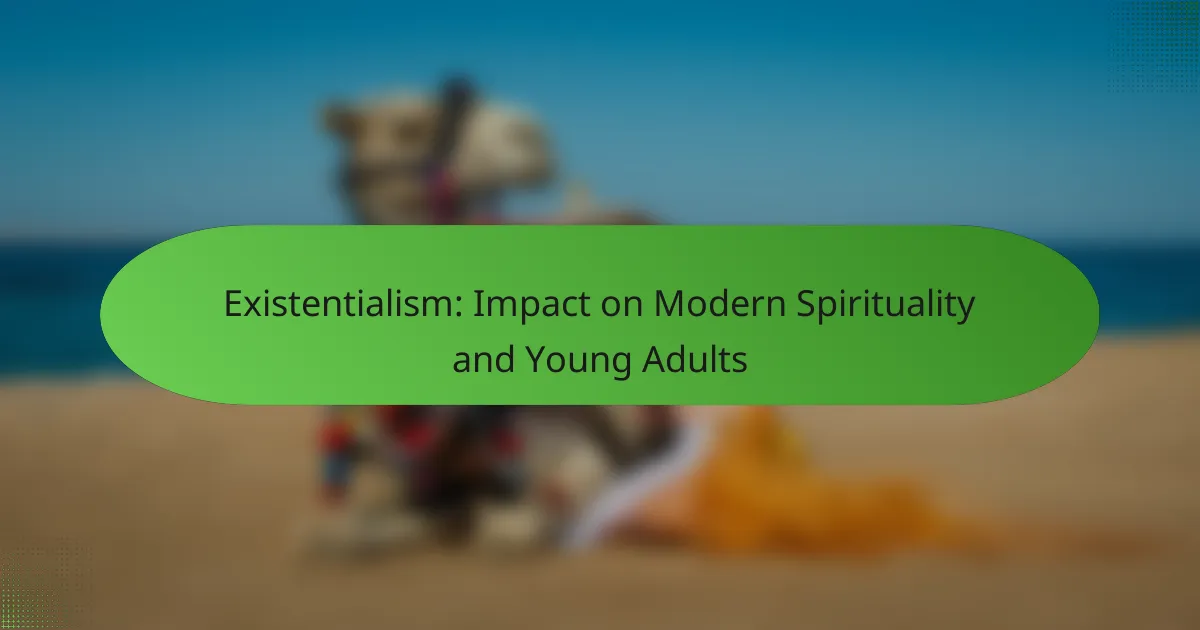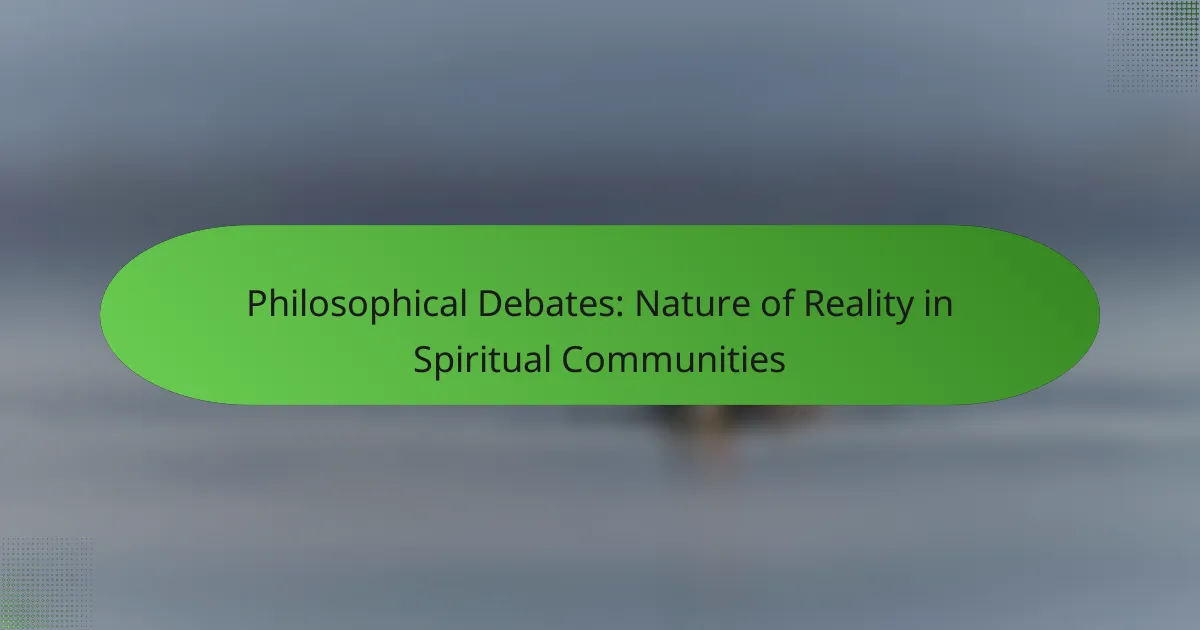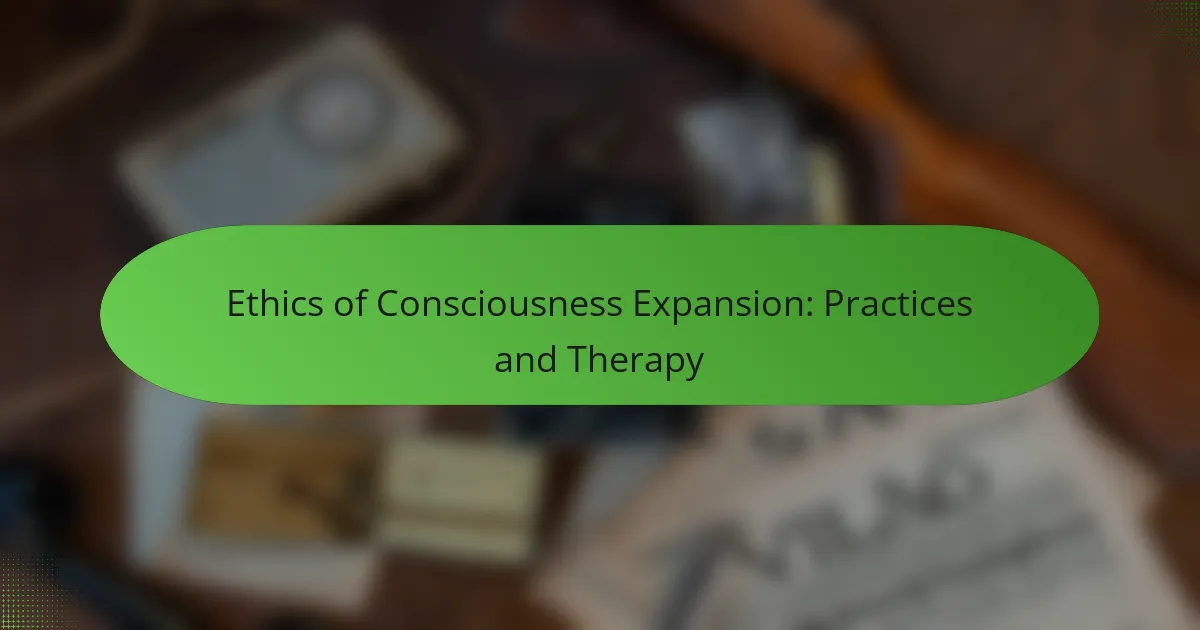Mysticism plays a crucial role in shaping contemporary spiritual practices by weaving ancient beliefs and techniques into modern frameworks. Influences from traditions such as Sufism, Kabbalah, and Eastern philosophies provide unique insights that many spiritual seekers integrate into their personal journeys. This blend of traditional and modern elements fosters a rich tapestry of rituals, meditation, and symbolism, resonating deeply with individuals today.
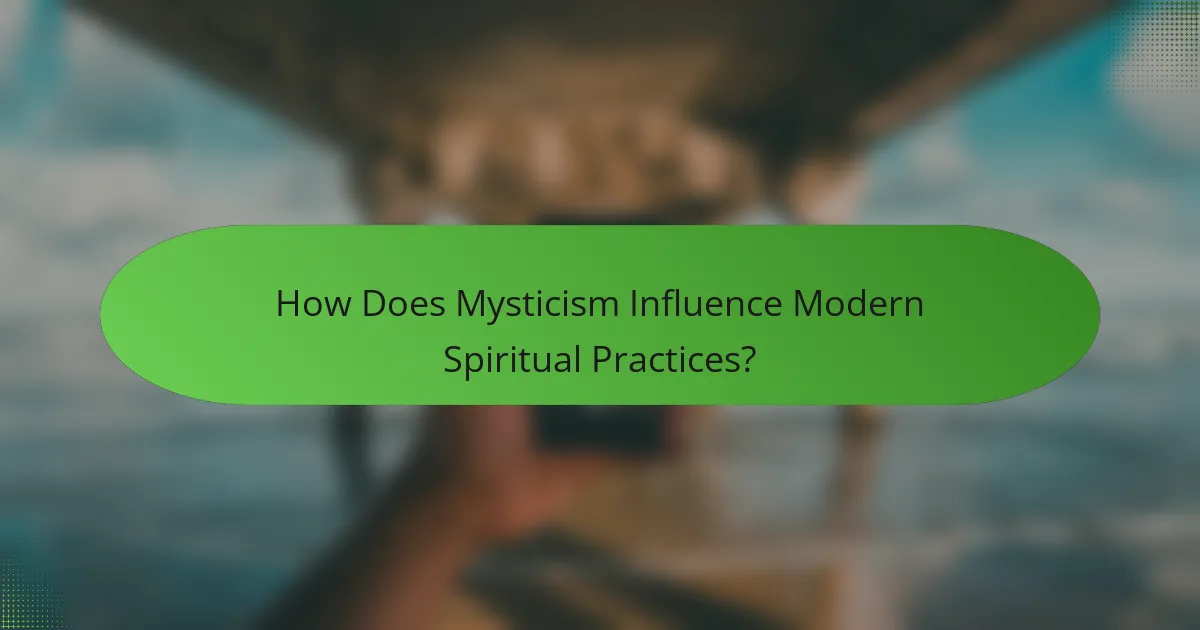
How Does Mysticism Influence Modern Spiritual Practices?
Mysticism significantly shapes modern spiritual practices by integrating ancient beliefs and techniques into contemporary frameworks. This influence manifests through rituals, meditation, and the use of symbolism, creating a rich tapestry of spiritual expression that resonates with many today.
Integration of ancient rituals
Many contemporary spiritual practices incorporate ancient rituals to create a sense of connection with the past. These rituals often include ceremonies, seasonal celebrations, and rites of passage that have been passed down through generations. For example, practices like the Winter Solstice or Full Moon ceremonies draw from ancient traditions, fostering community and personal reflection.
When integrating these rituals, consider the cultural context and significance behind them. Understanding the origins can enhance the experience and ensure respectful practice. Avoid appropriating rituals without proper knowledge, as this can lead to misunderstandings and disrespect towards the originating culture.
Adoption of meditation techniques
Meditation techniques rooted in mysticism are widely adopted in modern spirituality, promoting mindfulness and inner peace. Practices such as Zen meditation, Transcendental Meditation, and guided visualizations often draw from mystical traditions, emphasizing the importance of stillness and self-awareness.
To effectively incorporate these techniques, start with short sessions, gradually increasing duration as comfort grows. Aim for consistency, practicing several times a week. Resources like apps or local meditation groups can provide guidance and community support, enhancing the overall experience.
Use of symbolism in contemporary spirituality
Symbolism plays a crucial role in contemporary spiritual practices, often derived from mystical traditions. Symbols such as the mandala, the yin-yang, or the lotus flower convey deep meanings and serve as focal points for meditation and reflection. These symbols can help practitioners connect with larger spiritual concepts and their personal journeys.
When using symbols, ensure they resonate personally and align with your beliefs. Avoid using symbols superficially; instead, explore their meanings and how they relate to your spiritual path. This deeper understanding can enrich your practice and foster a more profound connection to your spirituality.
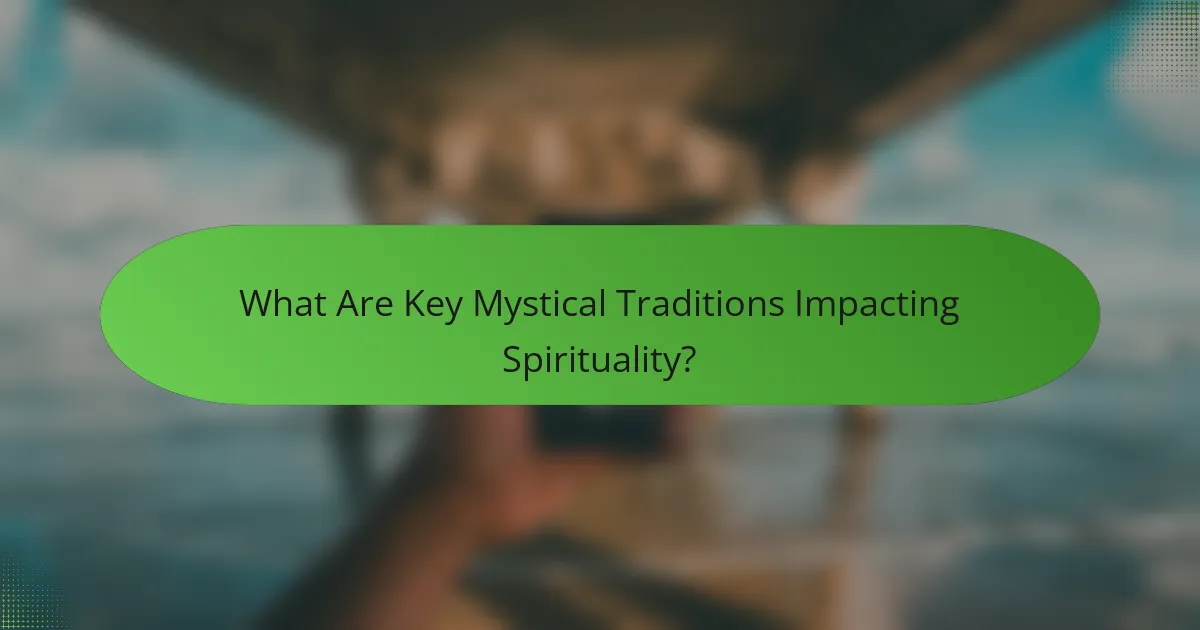
What Are Key Mystical Traditions Impacting Spirituality?
Key mystical traditions such as Sufism, Kabbalah, and various Eastern philosophies significantly influence contemporary spiritual practices. These traditions offer unique insights and techniques that many modern spiritual seekers incorporate into their personal journeys.
Sufism and its practices
Sufism, the mystical branch of Islam, emphasizes a personal connection with the Divine through practices like meditation, chanting (dhikr), and poetry. Sufi teachings often focus on love, devotion, and the pursuit of inner truth, which resonate with many contemporary spiritual seekers.
Common practices include the use of music and dance, such as the whirling of the dervishes, which serve as a means to achieve spiritual ecstasy and closeness to God. Engaging with Sufi literature, like the works of Rumi, can also provide inspiration and guidance for those exploring spirituality today.
Kabbalah’s influence on modern thought
Kabbalah, a mystical interpretation of Jewish teachings, has gained popularity in contemporary spirituality, particularly through its exploration of the nature of God and the universe. Concepts such as the Tree of Life and the ten sefirot offer frameworks for understanding spiritual growth and the interconnectedness of all existence.
Many modern spiritual practitioners draw on Kabbalistic principles to enhance their meditation and self-reflection practices. The emphasis on personal experience and direct connection with the Divine aligns well with the desires of those seeking deeper spiritual understanding today.
Eastern philosophies and their adoption
Eastern philosophies, including Buddhism and Hinduism, have profoundly influenced Western spiritual practices. Concepts like mindfulness, meditation, and the pursuit of enlightenment have become integral to many contemporary spiritual paths, promoting mental clarity and emotional well-being.
Practices such as yoga and tai chi, rooted in these philosophies, are widely adopted for their physical and spiritual benefits. Engaging in these practices can help individuals cultivate a sense of peace and balance in their lives, making them popular choices for those on a spiritual journey.
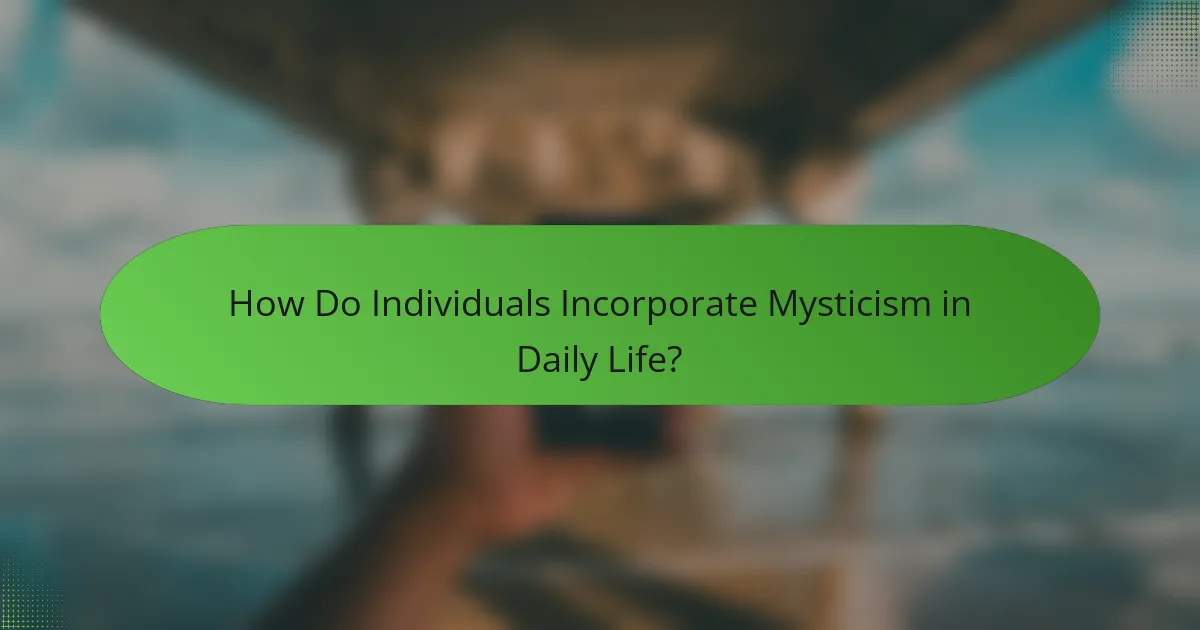
How Do Individuals Incorporate Mysticism in Daily Life?
Individuals incorporate mysticism in daily life through personal rituals, community gatherings, and online platforms that facilitate spiritual exploration. These practices often blend traditional beliefs with modern interpretations, allowing for a personalized spiritual experience.
Personal rituals and practices
Personal rituals are essential for integrating mysticism into everyday life. Common practices include meditation, journaling, and the use of crystals or tarot cards, which help individuals connect with their inner selves and the universe. Setting aside time daily or weekly for these rituals can enhance mindfulness and spiritual awareness.
Many people create unique rituals that resonate with their beliefs, such as lighting candles, chanting, or engaging in nature walks. These activities can serve as grounding techniques, promoting a sense of peace and connection to the mystical aspects of life.
Community gatherings and workshops
Community gatherings and workshops provide opportunities for individuals to explore mysticism collectively. These events often include group meditations, discussions on spiritual topics, and hands-on activities like energy healing or ritual crafting. Participating in such gatherings fosters a sense of belonging and shared exploration.
Many spiritual communities organize regular meetups, which can range from informal circles to structured workshops. Engaging with others in these settings allows for the exchange of ideas and experiences, enriching one’s personal spiritual journey.
Online platforms for spiritual exploration
Online platforms have become vital for those seeking to incorporate mysticism into their lives. Websites, forums, and social media groups offer resources, discussions, and virtual events that cater to various spiritual interests. These platforms make it easier to connect with like-minded individuals across the globe.
Popular platforms may include dedicated spiritual websites, YouTube channels, and apps focused on meditation or tarot readings. Utilizing these resources can help individuals expand their knowledge and practice, making mysticism accessible regardless of geographical location.

What Are the Benefits of Mystical Practices?
Mystical practices offer numerous benefits, including enhanced self-awareness, improved mental well-being, and stronger community connections. These practices often involve techniques such as meditation, contemplation, and rituals that foster a deeper understanding of oneself and the world.
Enhanced self-awareness
Engaging in mystical practices can significantly boost self-awareness by encouraging introspection and reflection. Techniques like meditation allow individuals to observe their thoughts and emotions without judgment, leading to a clearer understanding of personal motivations and desires.
To enhance self-awareness, consider setting aside regular time for practices such as journaling or guided meditation. These activities can help clarify your values and beliefs, ultimately guiding your decision-making process.
Improved mental well-being
Mystical practices can contribute to better mental health by reducing stress and anxiety. Mindfulness meditation, for instance, has been shown to lower cortisol levels, promoting a sense of calm and emotional stability.
Incorporating these practices into your daily routine can lead to long-term benefits. Aim for at least 10-20 minutes of meditation or deep breathing exercises each day to experience noticeable improvements in your overall mental well-being.
Stronger community connections
Participating in mystical practices often fosters a sense of belonging and connection with others. Group activities, such as communal meditation or spiritual retreats, create opportunities for individuals to share experiences and support one another.
To strengthen community ties, seek out local groups or online forums that focus on mystical practices. Engaging with like-minded individuals can enhance your spiritual journey and provide valuable social support.
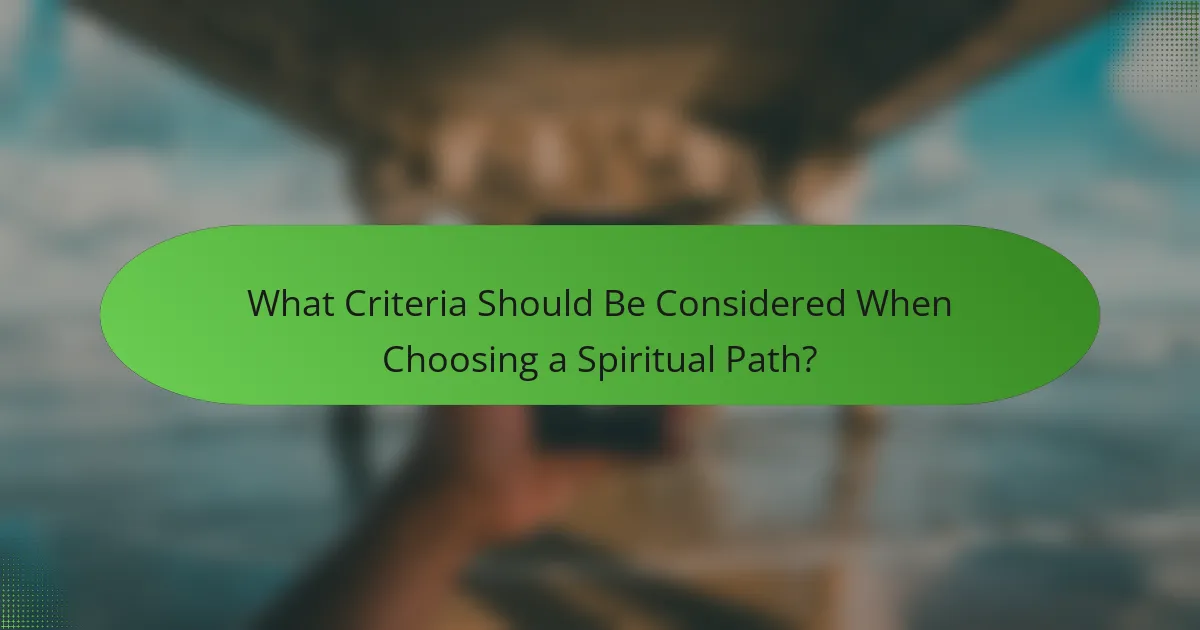
What Criteria Should Be Considered When Choosing a Spiritual Path?
When selecting a spiritual path, consider how well it aligns with your personal beliefs, values, and lifestyle. It’s essential to evaluate the accessibility of the practices involved and how they resonate with your daily life.
Alignment with personal values
Choosing a spiritual path that aligns with your personal values is crucial for long-term commitment and fulfillment. Reflect on what matters most to you—whether it’s compassion, community, or self-discovery—and seek traditions that emphasize these principles.
For example, if environmental sustainability is a core value, you might explore spiritual practices that incorporate nature worship or eco-conscious living. This alignment can enhance your motivation and deepen your spiritual experience.
Accessibility of practices
Accessibility of practices refers to how easily you can engage with the spiritual path you choose. Consider factors such as the availability of local communities, resources, and the time commitment required for rituals or study.
For instance, if you have a busy schedule, look for paths that offer flexible practices, such as meditation or online courses. Additionally, ensure that any required materials or teachings are readily available, whether in person or digitally.

